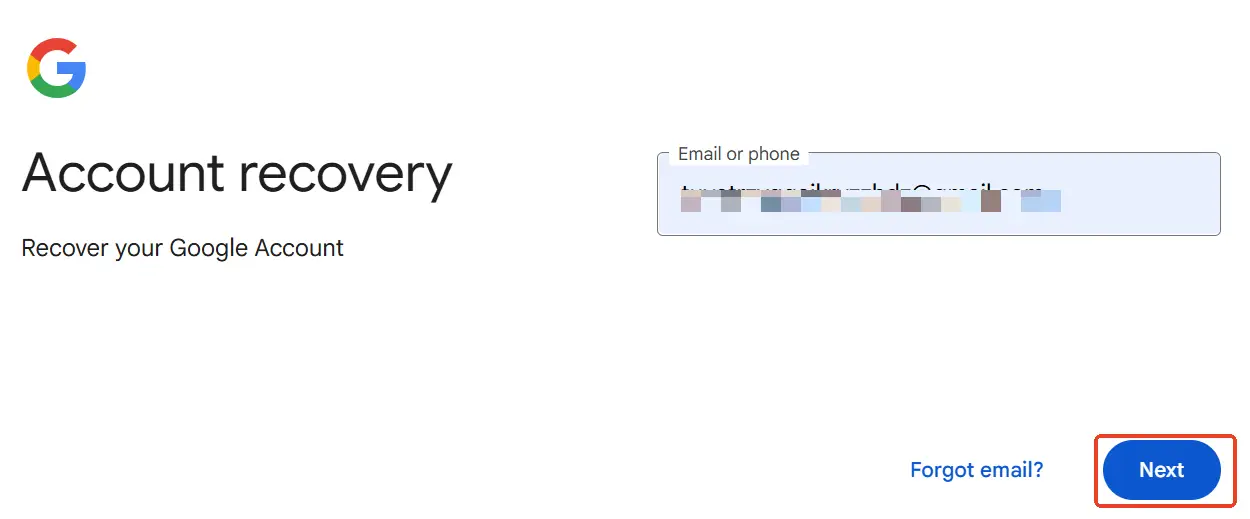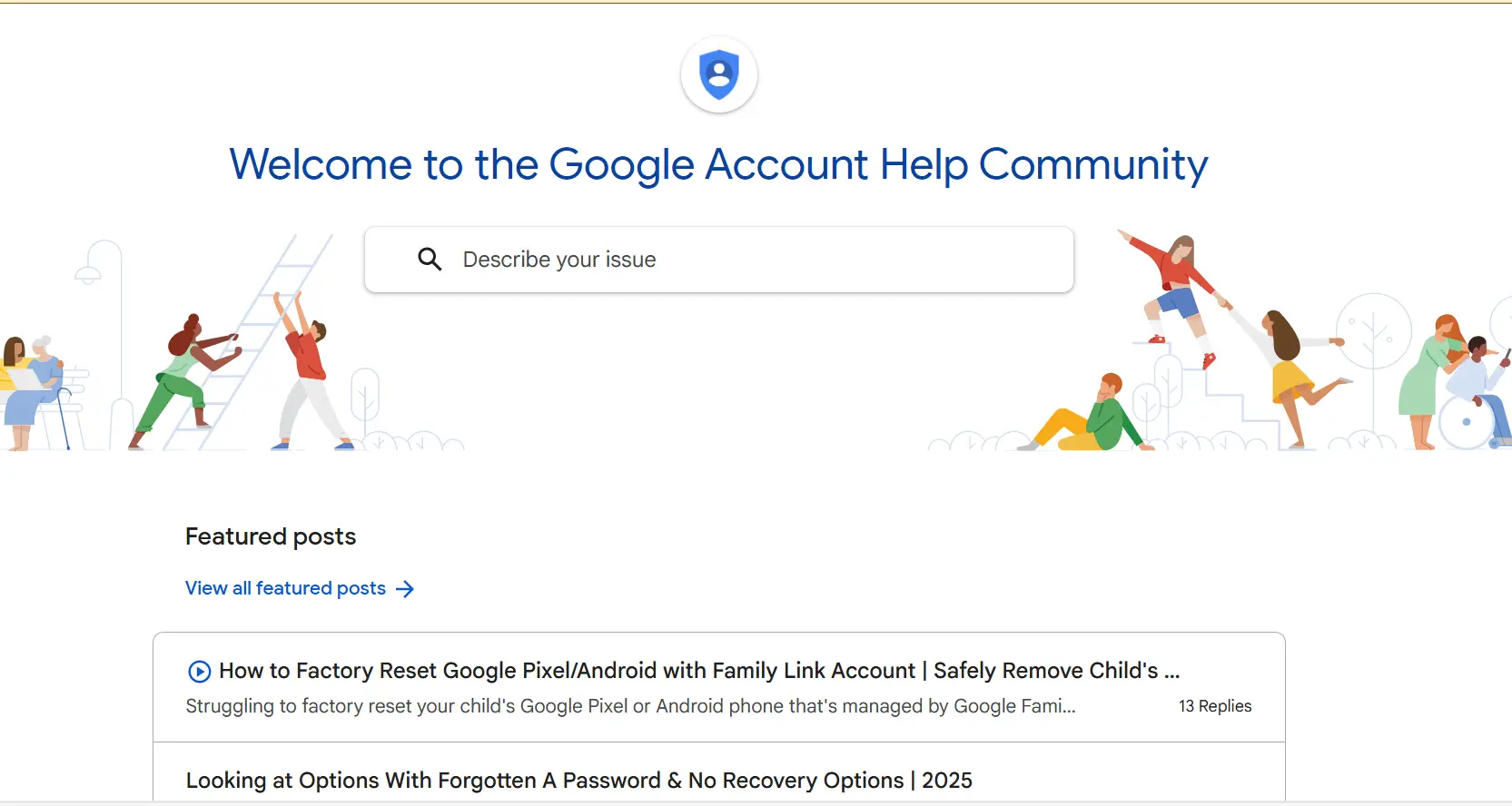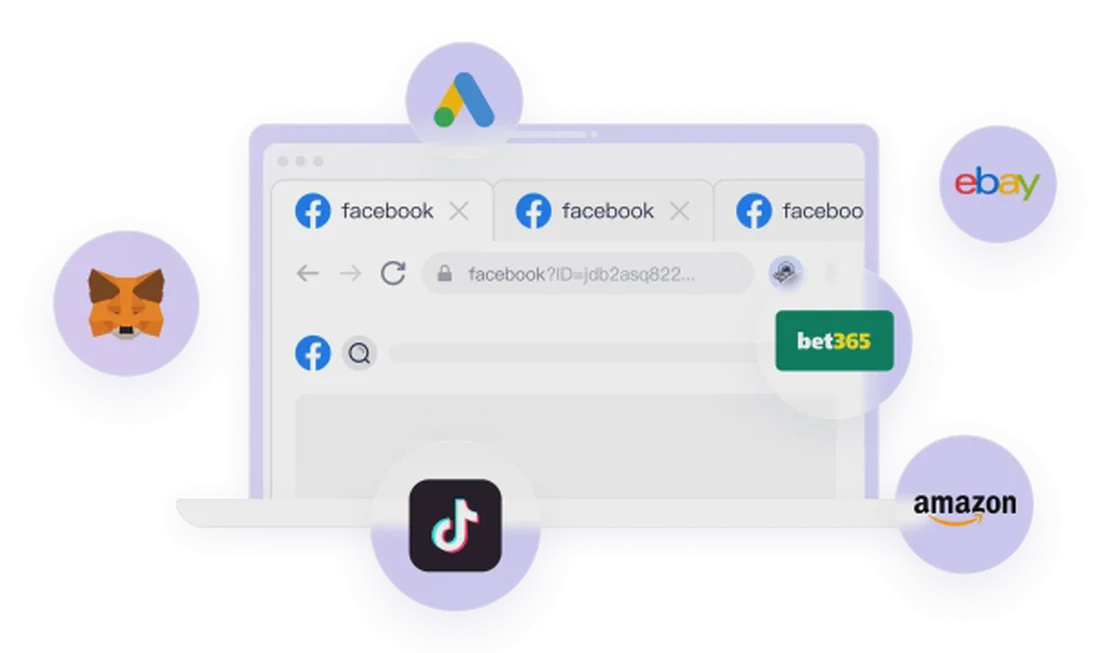“Couldn’t sign in to your Google Account” - when this cold message pops up on your screen, it can feel like the digital world has just crashed down around you. Your Google account is more than just an email address; it’s the key to your digital life, connecting your work, studies, and personal world. It’s tied to your cloud storage, family photos, the core of your Android phone, and even your daily navigation and payments. Once disabled, you can feel instantly cut off.
But don’t panic just yet. This isn’t the end of the world. Most account suspensions are due to system misjudgments or users accidentally triggering security measures. This article, combined with common recovery procedures and successful experiences, will provide you with a comprehensive “self-help” guide to step-by-step regain control of your Google account.
Stay Calm and Analyze the Reason for the Ban
Before you start the appeal process, the most crucial step is to remain calm and analyze why your account might have been banned. This helps you provide more targeted information during your appeal, increasing your chances of success. Common reasons include:
- Multiple Wrong Passwords: Entering the wrong password multiple times in a short period can be flagged as a suspicious login attempt.
- Unusual Login Activity: Logging in for the first time from a new device, new location, or new browser, or having frequently changing IP addresses.
- Suspected Bot or Automated Activity: Signs that the account was used for sending spam, performing batch operations, or distributing apps on unofficial app stores.
- Violation of Google’s Terms of Service: For example, creating a fake account, misusing others’ information, or spreading malicious content.
- Excessive Negative Feedback or Abuse Reports: If emails sent through your Gmail are marked as spam by a large number of users, it could lead to issues.
Find the Official Appeal Channel
Google’s official appeal channel is the only legitimate path to account recovery. Be sure to use the official link and do not trust any third-party websites that claim to “unlock your account for a fee,” as these are likely scams.
The most direct appeal portal is: https://g.co/recover
This is Google’s dedicated account recovery page, where you’ll enter your Gmail address or phone number to begin the process.

State Your Case for Appeal
After navigating to the webpage mentioned above, log in to your account and click on “Appeal”. You will then be directed to a page where you can fill in your “Reason for Appeal”. When completing this form, please note the following key points:
- Be Sincere and Respectful: Use a polite and sincere tone. Shift the focus from “I didn’t do anything wrong” to “Here is how I will use my account correctly.”
- Acknowledge the Situation: Even if you believe it’s a system error, don’t directly criticize. You can say, “I’m not sure of the exact reason, but I have carefully read Google’s Terms of Service and commit to strictly following them going forward.”
- Be Specific About Your Use: Detail exactly how the account will be used in the future. For example, if you use it to contact family and friends, state that clearly. If for work, mention the associated Google Workspace services (like Google Drive, Docs).
- Make a Clear Commitment: Explicitly promise that you will not send spam, use it for illegal activities, and will maintain a safe and positive digital environment.
Below is a template you can modify and fill in with your own details.
[Appeal Case Template]
Dear Google Account Support Team,
I am writing to request the restoration of my Google Account (email address: [Your Full Gmail Address Here]). My account was recently suspended, and this has caused significant disruption for me as I rely heavily on this account for daily communication, work, and managing important personal data.
Upon receiving the notification of suspension, I immediately studied Google’s Terms of Service and Community Guidelines thoroughly. I acknowledge that some of my activities (for example, logging in from a new device or network) may have triggered your security detection mechanisms, and for that, I apologize.
To prove that I am the legitimate owner of this account and to hopefully regain access, I have attached my proof of identification documents to the appeal form for your review.
I solemnly promise that if my account is restored, I will strictly abide by all of Google’s policies and regulations. This account will be used exclusively for the following legitimate and compliant purposes:
- For daily email communication with my family and friends.
- To store and share my personal photos, documents, and files (using Google Drive).
- To receive important notifications and official correspondence from [e.g., my university/employer].
I will absolutely not use this account for any form of spamming, fraudulent activity, or any other behavior that violates Google’s policies. I greatly value my Google account and assure you it will always serve as a positive and healthy digital identity.
I kindly ask you to please reconsider my case and restore my account access. Thank you for your time and understanding. I look forward to your positive response.
Sincerely,
[Your Name]
Be Patient and Be Prepared for a Second Appeal
After submitting your case and materials, it’s time to be patient. Google’s review team manually processes a massive volume of requests, which can take anywhere from a few days to several weeks. During this time, please:
- Be Patient: Do not resubmit your appeal within a day, as this will only move you to the back of the queue.
- Check Spam Folders: Pay attention to the spam folder of the backup email you used for the appeal, as Google might try to contact you there.
- Prepare for a Second Appeal: If you receive a denial letter after the first attempt, don’t be discouraged. This is often a standard procedure. You can prepare more detailed evidence based on the clues in Google’s denial and submit a new request through the same portal.
Alternative Appeal Channels
If you haven’t received a response from the main channel for an extended period, or if your case is particularly unique, you may want to try the following alternative channels.
Google Customer Service Community
Google operates an official help community staffed by experts and volunteers who answer questions.
Applicable situations:
- You need more comprehensive advice.
- Your situation is quite unique and you’d like insights from other users’ experiences.
- You want to learn about the average wait time for the current recovery process.
How to proceed:
- Visit the Google Account Help Community.
- Use the search function to check if others have encountered similar issues and how they resolved them.
- If you don’t find a solution, you can start a new thread. Provide a detailed description of your issue and mention that you have already submitted the official form. While this doesn’t guarantee direct contact with Google officials, it may catch the attention of community experts who can offer helpful guidance.

How to Avoid Being Banned Again After Restoration
Congratulations, if your appeal is successful, your account has been restored. However, this doesn’t mean you can rest easy. To prevent this from happening again, you must build good usage habits from the very moment of recovery.
- Enable Two-Step Verification (2FA): This is the golden rule for account security. With 2FA enabled, even if someone knows your password, they cannot log in without your phone’s verification code. Be sure to enable it immediately after recovery under “Google Account > Security.”
- Use a Strong and Unique Password: Ensure your password is complex (including a mix of upper and lower case letters, numbers, and symbols) and is not reused on any other websites.
- Regularly Review Account Security Activity: Use Google’s “Security Check-up” feature to regularly review your recent login history. If you see any unfamiliar locations or devices, immediately remove them and change your password.
- Be Cautious with App Permissions: When logging into or authorizing third-party apps (especially those from unknown sources), carefully review the permissions they are requesting and avoid unnecessary permissions.
- Avoid High-Risk Operations: In the initial period after recovery, avoid any activities that might be flagged as “abnormal behavior,” such as sending emails in rapid succession or frequently joining/leaving groups. Give the system some time to “learn” your normal usage patterns.
FlashID: The “Security Shield” for Multi-Account Managers
For users who need to manage multiple Google accounts—such as digital marketers, cross-border e-commerce sellers, or affiliate marketers—the risk of an account ban is multiplied. Frequently switching between accounts on the same device or browser environment can easily lead to account association, which the system may flag as “suspicious activity,” leading to a mass ban.
This is where a professional multi-account isolation tool becomes essential. FlashID is a Anti-Detection Browser and cloud phone product designed specifically for this purpose.
- Browser-Side Isolation: Through the FlashID browser, each Google account has a completely independent browser fingerprint (User-Agent, Canvas, WebGL, etc.) and IP address. On a single device, you can securely log in and manage dozens of accounts, and from Google’s perspective, they appear to be coming from different, completely independent users. This fundamentally eliminates the risk of account association.
- Mobile-Side Isolation: For users who need to manage multiple accounts on an Android phone, FlashID’s cloud phone feature is the perfect solution. Each cloud phone is a clean, independent Android virtual machine where you can log in with different Google accounts without interference, completely solving the multi-account management challenge on mobile.
- Automation for Efficiency: FlashID supports window synchronization and RPA (Robotic Process Automation) features. You can perform an action on your main account, and all other logged-in accounts will follow suit. This is a game-changer for tasks requiring bulk operations (like mass registration, liking, commenting), saving significant labor costs and making it an essential tool for online earning and efficiency boosting.
In summary, using Google services responsibly and adhering to their Terms of Service is the fundamental way to prevent bans. However, if you need to operate multiple accounts simultaneously, using a professional tool like FlashID can build a solid “firewall” for your account security.
Frequently Asked Questions (FAQ)
- Q: My Google account was disabled, but I don’t have a backup email or phone number. Can I still appeal? A: Yes, but it will be much more difficult. On the appeal form, be sure to fill in as many details as you can about your last successful login (time, place, device) and the account’s primary use. Try to provide other forms of ID proof, like a scanned ID card or a screenshot of your original Gmail welcome email, to prove ownership.
- Q: Does Google have a support phone number I can call to speak with a human representative?
A: Google does not offer direct phone support for account appeals. They primarily rely on the online appeal form for review. Therefore, carefully filling out the form at
g.co/recoveris the only correct procedure. - Q: How long does it take to get a response after I submit my appeal? A: Google does not provide an exact processing time; it usually takes anywhere from a few days to a few weeks, depending on the volume of requests and the clarity of your submitted materials. It’s best to be patient and periodically check the spam folder of your backup email.
- Q: Why was my appeal rejected even though I provided an ID card? A: There could be many reasons. For instance, your files may not have been clear enough, the name on your ID didn’t match your information on Google, or the review agent still had doubts about the account’s legitimacy. You can try appealing again with more comprehensive proof.
- Q: Will I get banned if I log into multiple Google accounts on the same computer? A: It’s usually fine if you just switch infrequently. However, if you switch frequently without using isolation measures, the system might detect unusual login patterns, increasing the risk of being flagged or restricted. Using a fingerprint browser like FlashID can effectively mitigate this risk.
- Q: How does FlashID help prevent Google accounts from being disabled? A: FlashID creates a separate browser environment for each Google account, giving each one a unique “digital fingerprint” and IP address. This makes Google’s servers believe each account belongs to a different real person, thus effectively preventing account association and bans caused by suspicious activity.
- Q: What’s the difference between Chrome’s “user profiles” and FlashID? A: Chrome’s user profiles simply isolate login sessions, cookies, and extensions within the same browser. However, they still share the same underlying system fingerprint and IP, making them easily identifiable as linked accounts by Google. FlashID achieves complete isolation at a much deeper level, making it far more secure.
- Q: What can I use FlashID for, and what problem does it solve for me? A: FlashID is an essential tool for digital marketers, e-commerce sellers, affiliate marketers, and anyone involved in online earning. It allows for the safe management of hundreds or thousands of social media, e-commerce, and ad accounts, preventing bans and dramatically boosting operational efficiency through automation features like window synchronization.
- Q: Is it safe to use FlashID? Will my account information be leaked? A: FlashID’s core value is account security and privacy. It does not store or steal any of your passwords or sensitive information. On the contrary, it protects your accounts by reducing the risk of information leaks that could occur from a mass ban due to association. You can use it with confidence.
- Q: Besides Google accounts, what other platforms can FlashID be used for? A: FlashID is highly versatile and can be used with almost any major online platform, including but not limited to Facebook, Instagram, TikTok, Amazon, eBay, Shopify, Twitter, and major affiliate networks and ad platforms. It’s the ideal solution for any scenario requiring large-scale, secure multi-account management.
You May Also Like
